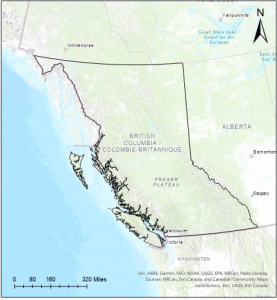Wetlands are unique areas of land that are fully saturated with water either permanently or seasonally and are a critical component of the hydrological cycle. These rich ecosystems are particularly important for many endangered species, including the Western Sandpiper, turtles (i.e. Spotted turtle), invertebrates, and mammals such as the Water vole which rely on wetlands for refuge, foraging, and roosting during migration. Given the role of significant wetlands in nutrient cycling, possessing high organic matter content and primary productivity, they are crucial in the maintenance of biodiversity (Fennessy et al. 2008). Human developments have led to ongoing wetland habitat loss and degradation as areas that support wetland ecosystems are replaced with infrastructure or contaminated with garbage, industrial, and human waste (Sivakumar et al., 2007). Because wetlands serve as efficient water purification systems, they are attractive outlets for anthropogenic waste. For example, wetlands are a common buffer for mines, agriculture, and other contaminated sites (Feng et al., 2021). Increasing rates of siltation and eutrophication also exert further stress on wetland ecosystems (Sivakumar et al., 2007). There are several primary criteria that define suitable wetland such as low drainage soil, placement on agricultural reserves, isolation from built up land, and more. For the purposes of this analysis, emphasis will largely be placed on seven criteria that are used in the paper “A multi-Criteria Wetland Suitability Index for Restoration across Ontario’s Mixedwood Plains” to create a multi-criteria wetland suitability index (WSI) (Medland et al., 2020). The study area of this analysis is the entirety of British Columbia (BC).
Figure 1. Study Area of British Columbia. BC outline sourced from BC data catalogue.
